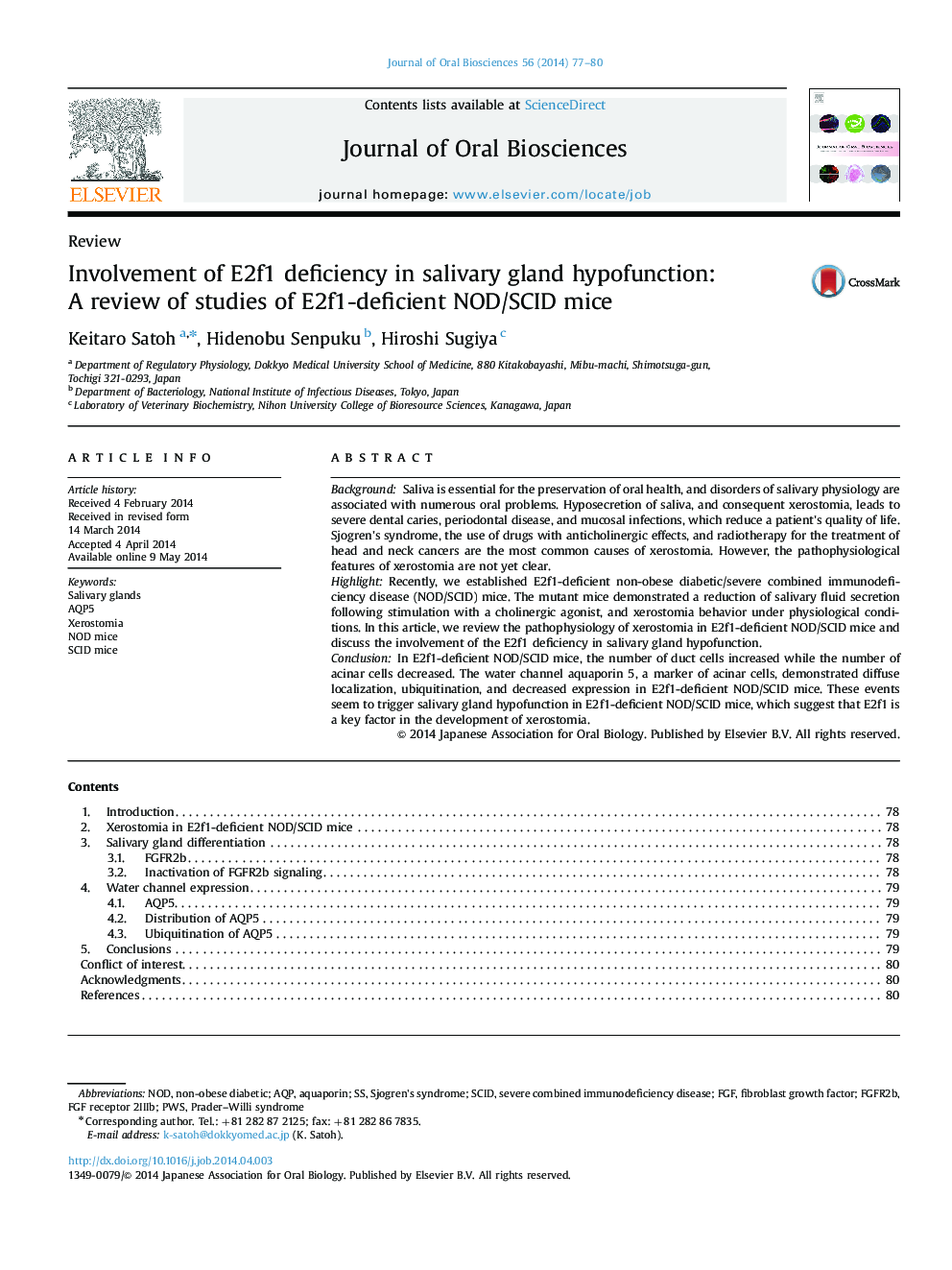| Article ID | Journal | Published Year | Pages | File Type |
|---|---|---|---|---|
| 2776826 | Journal of Oral Biosciences | 2014 | 4 Pages |
BackgroundSaliva is essential for the preservation of oral health, and disorders of salivary physiology are associated with numerous oral problems. Hyposecretion of saliva, and consequent xerostomia, leads to severe dental caries, periodontal disease, and mucosal infections, which reduce a patient׳s quality of life. Sjögren׳s syndrome, the use of drugs with anticholinergic effects, and radiotherapy for the treatment of head and neck cancers are the most common causes of xerostomia. However, the pathophysiological features of xerostomia are not yet clear.HighlightRecently, we established E2f1-deficient non-obese diabetic/severe combined immunodeficiency disease (NOD/SCID) mice. The mutant mice demonstrated a reduction of salivary fluid secretion following stimulation with a cholinergic agonist, and xerostomia behavior under physiological conditions. In this article, we review the pathophysiology of xerostomia in E2f1-deficient NOD/SCID mice and discuss the involvement of the E2f1 deficiency in salivary gland hypofunction.ConclusionIn E2f1-deficient NOD/SCID mice, the number of duct cells increased while the number of acinar cells decreased. The water channel aquaporin 5, a marker of acinar cells, demonstrated diffuse localization, ubiquitination, and decreased expression in E2f1-deficient NOD/SCID mice. These events seem to trigger salivary gland hypofunction in E2f1-deficient NOD/SCID mice, which suggest that E2f1 is a key factor in the development of xerostomia.
